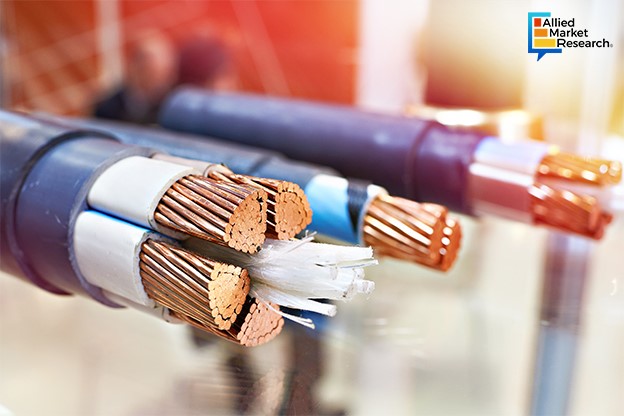Analyzing the Impact of Nanotechnology and Superconductivity on the Insulated Wire and Cable Industry

20 Jan
2025
Key takeaways:
- Introduction
- Advancements in superconductivity and optical fiber technology
- Innovations in nanotechnology and material science
Insulated wires and cables are the most common and important components used in domestic, commercial, and industrial sectors. The role of wires and cables has increased exponentially with industrialization and urbanization in almost all developed and developing countries. Additionally, the growing penetration of Internet and digital services has led to a surge in demand for different insulated cables. The various advantages offered by these wires have made them an obvious choice for telecommunications, automotive manufacturing, and consumer electronics companies. Most importantly, insulated cables reduce the chance of current leakages, short circuits, and electric shocks, thereby ensuring all-round safety from possible injuries, fatalities, and system failures. Moreover, advancements in material sciences have led to the development of innovative wire coatings that offer high-quality thermal resistance.
Increasing demand for superconductors and high-speed data transmission rates shaping the industry dynamics
In the last few years, the volume of investments in the insulated wire and cable industry has increased drastically. Multinational companies such as Honeywell International Inc., NXP Semiconductors, Invengo Technology Pte. Ltd., Avery Dennison Corporation, etc., have proactively initiated R&D programs to design advanced electrical coils for high-end applications. The market, which accounted for $160.54 billion in 2019, is anticipated to gather a revenue of $244.23 billion by 2027, rising at a CAGR of 5.3% during 2020-2027. The advent of modern variants such as superconductor cables, fiber-optic wires, wireless power transmission coils, etc., have contributed to the expansion of the landscape.
For instance, superconductive materials such as niobium-titanium and Yttrium barium copper oxide (YBCO) are now being used to develop superconducting wires that offer zero electrical resistance below their transition temperatures. Thus, the current densities presented by these materials are much higher than conventional copper cables. Superconductor cables have helped in the development of advanced nuclear magnetic resonance (NMR) machines, fast fault current limiters, and superconducting quantum interference devices that are used in research projects related to particle physics and quantum mechanics.
On the other hand, the emergence of fiber-optic cables has been one of the major factors behind the global expansion of the Internet. In the last few years, the role of optical-fiber wires has increased immensely due to the launch of 5G services in major developed and developing countries. To address the demand for high-speed Internet services, research institutes are engaged in developing ultra-modern cables that reduce latency and have a better bandwidth capacity.
Recently, a group of researchers from the National Institute of Information and Communications Technology (NICT) in Koganei, Japan have succeeded in developing a new fiber-optic technology that offers a data rate that is four times faster than conventional communication systems. Designed by combining six separate optical amplifiers, the system attained a record-breaking data transmission rate of 402 terabits per second (Tbps). Ben Puttnam, chief senior researcher of the project, stated that this new technology is projected to open new avenues for innovations in the industry.
Innovations in material sciences creating favorable conditions for the growth of the industry
One major trend witnessed in the insulated wire and cable industry is the increasing use of advanced wire coating materials to improve the strength and durability of the electric coil. At the same time, businesses are focusing on developing eco-friendly and recyclable insulating materials to reduce the overall carbon footprint of the industry. Advances in nanotechnology have further enabled companies to design materials that have better heat and chemical resistance and longer lifespans.
Along with this, the demand for polytetrafluoroethylene or Teflon cables has increased drastically in the last few years. Compared to traditional PVC cables, these wires offer much higher thermal resistance which has made them popular in different end-use industries, especially in automotive manufacturing. With the emergence of advanced driver-assistance systems and high-tech infotainment devices, the role of Teflon cables in automobiles is expected to rise. Furthermore, the shift toward electric mobility has created numerous growth opportunities for the industry due to the increase in demand for specialized vehicle charging cables.
To summarize, research in the field of superconductivity and the increasing demand for high-speed data transmission are expected to maximize the revenue share of the insulated wire and cable industry. Furthermore, innovations in the field of material science and nanotechnology are predicted to expand the footprint of the sector in the coming period.
Get in touch with our experts for insights on the growth drivers and investment opportunities in the industry

Akhilesh Prabhugaonkar
Author's Bio- Akhilesh Prabhugaonkar holds a bachelor’s degree in Electronics Engineering from the reputed Vishwakarma Institute of Technology. He has a special interest in the fields of forensics, world history, international relations and foreign policy, sports, agriculture, astronomy, security, and oceanography. An ardent bibliophile and melophile, Akhilesh loves to write on topics of his interest and various other societal issues. This love for writing made him enter the professional world of content writing and pursue his career in this direction.
Avenue: Entire Library membership of Allied Market Research Reports at your disposal
- Avenue is an innovative subscription-based online report database.
- Avail an online access to the entire library of syndicated reports on more than 2,000 niche industries and company profiles on more than 12,000 firms across 11 domains.
- A cost-effective model tailored for entrepreneurs, investors, and students & researchers at universities.
- Request customizations, suggest new reports, and avail analyst support as per your requirements.
- Get an access to the library of reports at any time from any device and anywhere.
Related Post
-
How are Submarine Cables Transforming Global Connectivity with Enhanced User Experience?
-
Endoscopy Procedures: Transformations in Techniques and Applications
-
AI-Powered Video Analytics: How the Product Actually Works for enterprises
-
Painting Robots: Transforming Precision Coating and Creative Applications
-
Innovations in Pharmacovigilance Systems Advancing Patient Safety
-
Understanding Edge Security: Keeping Data Safe Near the Source
-
Exploring the Use and Advancements of 3D Laser Scanners in Professional Applications
-
Reinforcing Industrial Controls with Smarter Tools and Training








